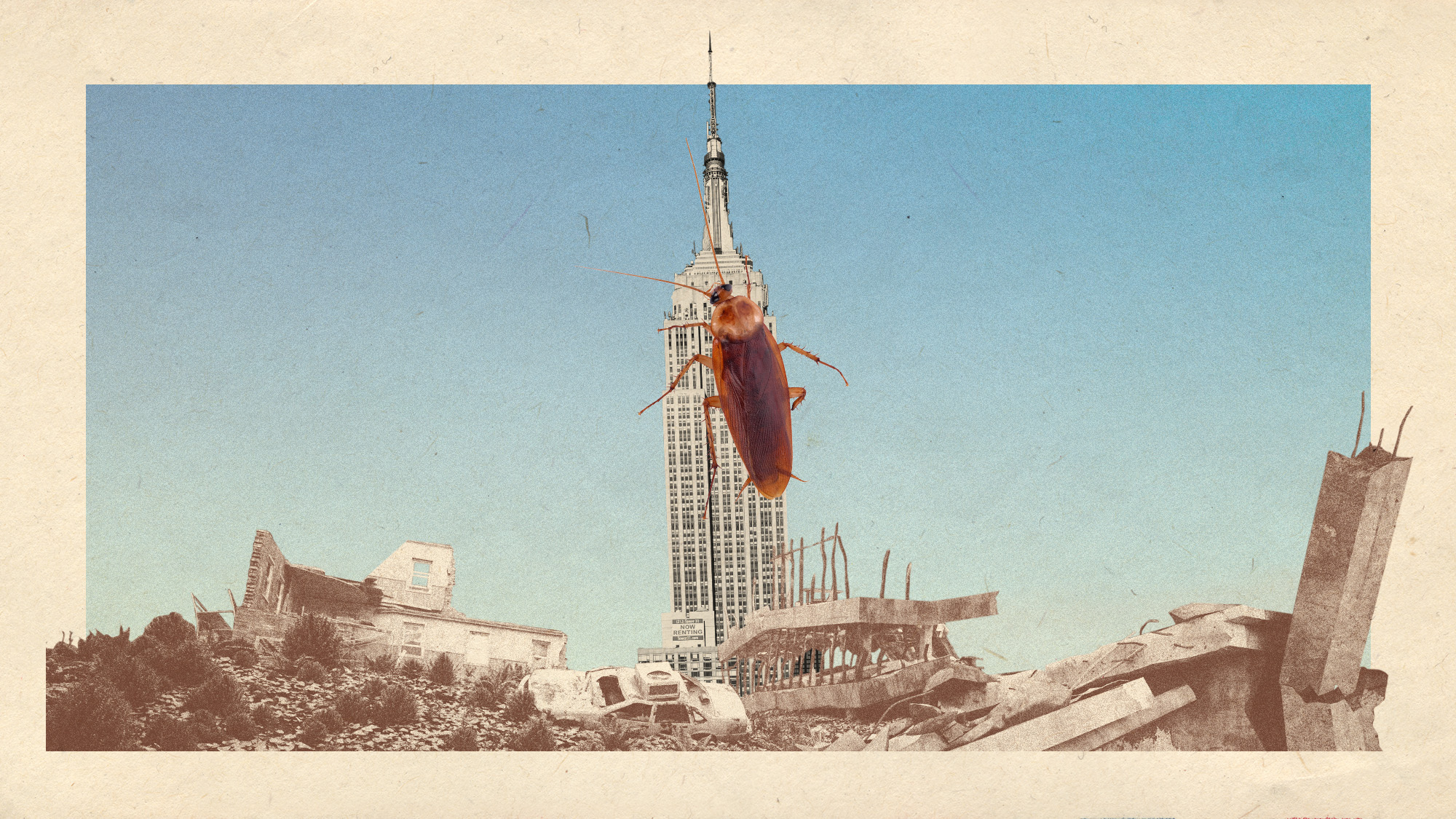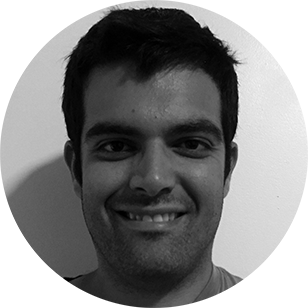Can carbon capture technology save the planet?
Humans have been spewing planet-warming greenhouse gases into the atmosphere for years. Can emerging innovations reverse the damage done?


Scientists are calling for drastic reductions in carbon in the atmosphere if we are to avoid the worst climate outcomes in the coming decades. Could carbon-capture technology help? Here's everything you need to know.
What role does carbon dioxide play in climate change?
Carbon dioxide is a heat-trapping gas. It's released naturally in some cases through processes like volcanic eruption, but over the last 170-plus years it has rapidly increased in abundance thanks in large part to human activity, particularly the burning of fossil fuels. NASA notes that atmospheric concentrations of carbon dioxide are 48 percent higher than the pre-industrial levels of 1850, a faster rise than the previous 20,000 year period. That in turn has led to a dangerous increase in global temperature. A dire United Nations climate report recently warned that a drastic reduction in carbon in the atmosphere would be necessary to keep global temperatures from rising more than 2 degrees celsius by 2100 and setting off a cascade of climate catastrophes. Many experts argue that simply reducing emissions won't get us there, especially because certain industries, like air travel, will take years to fully decarbonize. Enter carbon capture, the act of removing carbon dioxide directly from the air.
The Week
Escape your echo chamber. Get the facts behind the news, plus analysis from multiple perspectives.

Sign up for The Week's Free Newsletters
From our morning news briefing to a weekly Good News Newsletter, get the best of The Week delivered directly to your inbox.
From our morning news briefing to a weekly Good News Newsletter, get the best of The Week delivered directly to your inbox.
How do you do that?
There are multiple processes for capturing carbon. Trees absorb carbon, and forests serve as natural carbon sinks, so reforestation efforts are part of the decarbonization plan. But mass tree-planting isn't a cure-all. Once carbon is stored in biomass like trees and vegetation, it's unclear how long it will remain there before it escapes once more, especially because forests in the American West and Siberia have become increasingly vulnerable to forest fires, another fallout from climate change. That means carbon capture technology will likely have a role to play.
Such as?
There are two main tech-based carbon capture methods. Carbon capture and sequestration (CCS) involves trapping the gas at its emission source — say, a smokestack or a natural gas plant — before it can be released into the atmosphere. The other method is direct air capture (DAC), which aims to suck carbon dioxide from the air, even if it was released a long time ago. Both methods have the same goal: to isolate carbon, usually underground, where it can either be stored permanently or recycled and used in other processes, such as concrete production. The advantage of DAC is that it can be deployed anywhere, and requires less water and land usage than either CCS or natural strategies. It can also be powered by renewable energies.
A free daily email with the biggest news stories of the day – and the best features from TheWeek.com
How common is direct air capture?
The technology is definitely still in its nascent stage, but is quickly gaining traction. There are already a few systems up and running in mainland Europe, and on Sept. 8, a major new facility known as Orca and built by the Swiss company Climeworks, which specializes in DAC technology, went online in Iceland. It's set to become the largest of its kind. Orca, mainly powered by waste heat (leftover heat from any process that uses energy), employs eight carbon "collectors" that reel in air via fans and then isolate the carbon using a highly selective filter material. The carbon then gets heated, cooled, and pumped underground. Climeworks says that the system will soon remove up to 4,000 metric tons of carbon dioxide every year, and there reportedly isn't much reason to doubt its ability to meet this target. Soon, though, other projects — one in the southwestern United States and another in Scotland (which aims to remove about 1 million tons of carbon, on net, every year) — may eclipse Orca in scale.
Will removing that amount of carbon be enough to save the climate?
Definitely not. Last month's U.N. report estimated that to facilitate the most optimistic scenario of limiting the rise in global average temperatures to 1.5 degrees celsius, a whopping 17 billion tons of carbon dioxide would need to be removed annually. No one is expecting Orca or the other projects in development to carry that load on their own, so the hope among proponents of the technology is that the new projects will prove direct air capture can stand on its own as a viable commercial industry, paving the way for further facilities.
What are the chances of that happening?
Ask experts, and you'll probably get a wide range of answers. Some believe DAC will remain a niche technology, but others think demand will grow. In the end, a lot will depend on cost. A few years ago, Climeworks executives told journalist Jon Gertner that the cost of capturing one ton of carbon was roughly between $500-600. A recent analysis of the industry found that it's possible the cost range for DAC could eventually get as low as $100 per ton. That may be a long way off — many, many more plants will need to be built and engineers will likely have to continue to work to bring down production expenses by finding cheaper materials and improving assembly processes. But optimists point to other climate technologies, namely solar power, that were initially quite expensive, but eventually entered the mainstream and became not just affordable but downright cheap. If Orca can lower the price of DAC, Gertner writes, it could serve as a promising indication that scaling up is indeed feasible and convince major industries like airlines to invest in the technology to offset their emissions.
What about government investments?
Governments are also prepared to invest, including the U.S. at the federal and state level. If the Senate's bipartisan infrastructure bill passes the House this month, as expected, and heads to President Biden's desk, it will allocate as much as $3.5 billion to help construct large DAC plants.
Has carbon capture been successful so far?
It's probably too early to tell for DAC, but CCS has experienced some significant failures. One notable example is a Chevron project that sought to bury carbon under an island off Western Australia. The goal was to capture and store 80 percent of emissions from a natural gas site over the first five years, but it failed to do so.
Are environmentalists jazzed about the technology?
Not necessarily. Many think it will give the oil and gas industry an easy out without encouraging the much-needed shift away from fossil fuels. Back in July, more than 500 environmental organizations in the U.S. and Canada signed an open letter expressing concerns about government support for carbon capture technology. Their fear is that if oil and gas companies can implement their own carbon capture systems to offset emissions, they'll use that as an excuse to keep extracting fossil fuels, ultimately perpetuating the existing problem. Critics have argued that even some of the more well-intentioned efforts to build up carbon infrastructure really only serve to divert attention away from the fight against fossil fuels, which they feel should be the priority.
Is that the consensus?
Although there is a decent amount of opposition to the idea, many other environmentalists remain neutral or in favor of carbon capture technology, so long as it works in tandem with other efforts to eliminate greenhouse gas emissions. The concerns about the fossil fuel industry are real — Shuchi Talati, the chief of staff at the Department of Energy's Office of Fossil Energy, has clarified that "avoiding emissions first is always the priority" — but there is a growing realization that carbon capture is necessary to meeting climate goals to keep temperatures down. The reverse is also true. Companies like Climeworks say they realize that their technology is not a silver bullet, and that other mitigation efforts are needed.
Tim is a staff writer at The Week and has contributed to Bedford and Bowery and The New York Transatlantic. He is a graduate of Occidental College and NYU's journalism school. Tim enjoys writing about baseball, Europe, and extinct megafauna. He lives in New York City.
-
 US citizens are carrying passports amid ICE fears
US citizens are carrying passports amid ICE fearsThe Explainer ‘You do what you have to do to avoid problems,’ one person told The Guardian
-
 All roads to Ukraine-Russia peace run through Donetsk
All roads to Ukraine-Russia peace run through DonetskIN THE SPOTLIGHT Volodymyr Zelenskyy is floating a major concession on one of the thorniest issues in the complex negotiations between Ukraine and Russia
-
 Why is Trump killing off clean energy?
Why is Trump killing off clean energy?Today's Big Question The president halts offshore wind farm construction
-
 How climate change is affecting Christmas
How climate change is affecting ChristmasThe Explainer There may be a slim chance of future white Christmases
-
 Why scientists are attempting nuclear fusion
Why scientists are attempting nuclear fusionThe Explainer Harnessing the reaction that powers the stars could offer a potentially unlimited source of carbon-free energy, and the race is hotting up
-
 Canyons under the Antarctic have deep impacts
Canyons under the Antarctic have deep impactsUnder the radar Submarine canyons could be affecting the climate more than previously thought
-
 NASA is moving away from tracking climate change
NASA is moving away from tracking climate changeThe Explainer Climate missions could be going dark
-
 What would happen to Earth if humans went extinct?
What would happen to Earth if humans went extinct?The Explainer Human extinction could potentially give rise to new species and climates
-
 Bacteria can turn plastic waste into a painkiller
Bacteria can turn plastic waste into a painkillerUnder the radar The process could be a solution to plastic pollution
-
 Florida has a sinking condo problem
Florida has a sinking condo problemUNDER THE RADAR Scientists are (cautiously) ringing the alarms over dozens of the Sunshine State's high-end high-rises
-
 Diamonds could be a brilliant climate solution
Diamonds could be a brilliant climate solutionUnder the radar A girl and the climate's best friend
